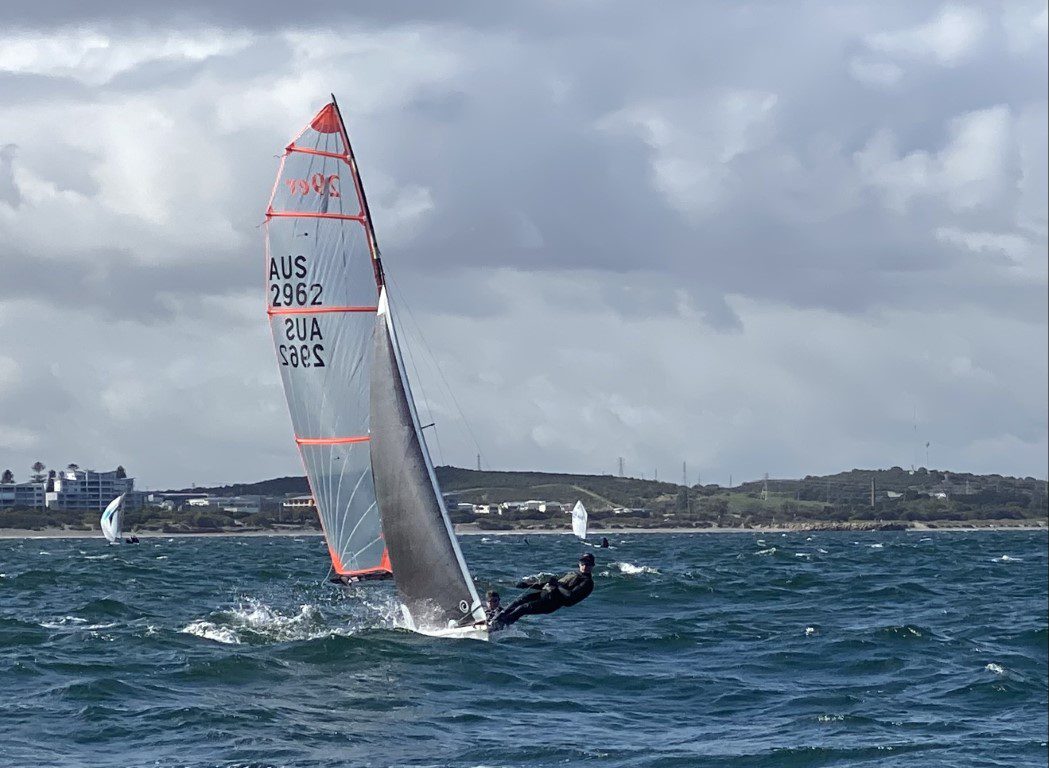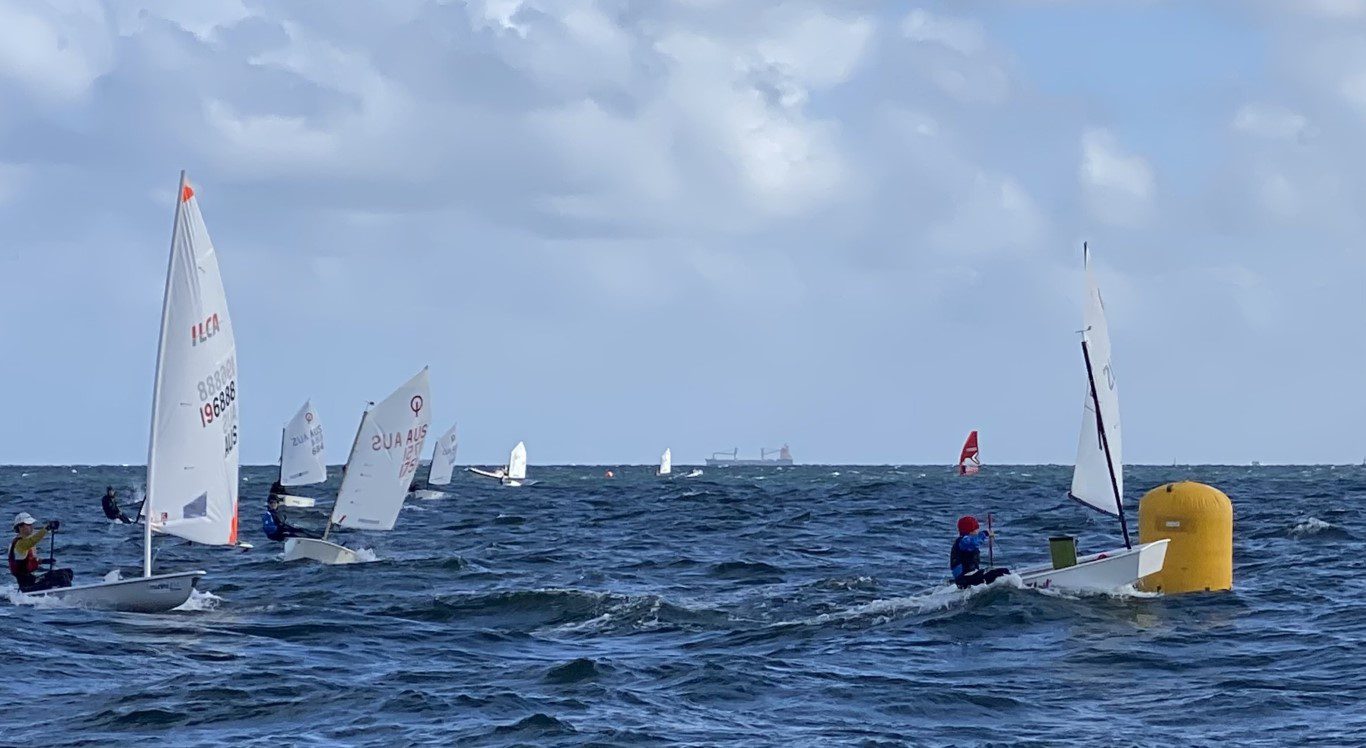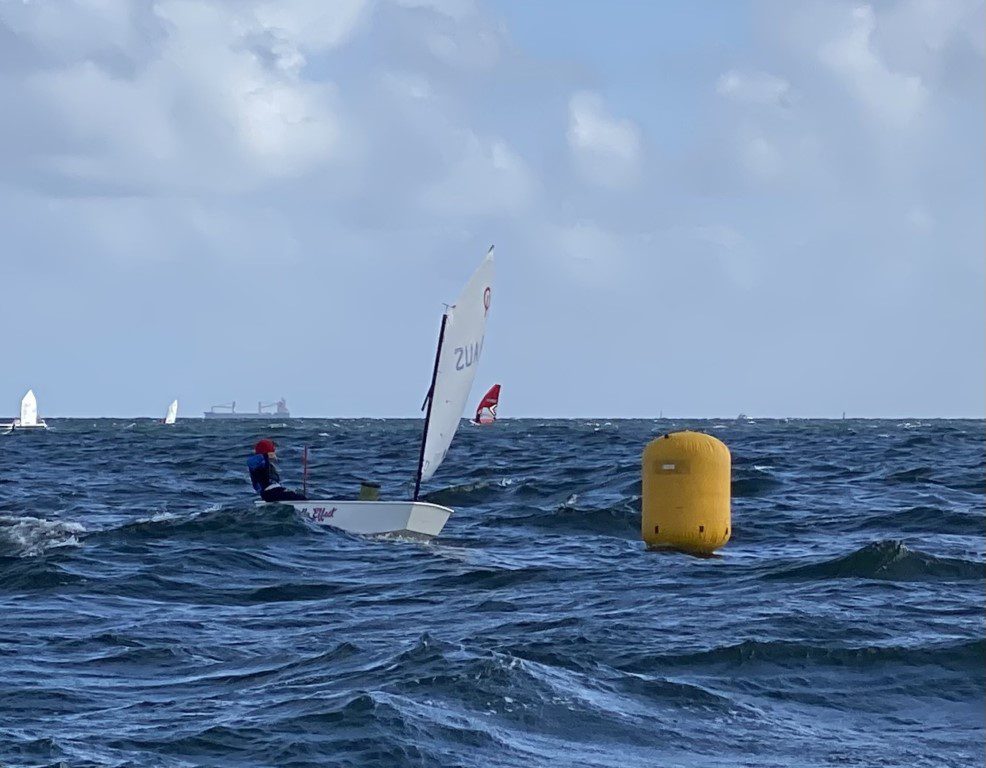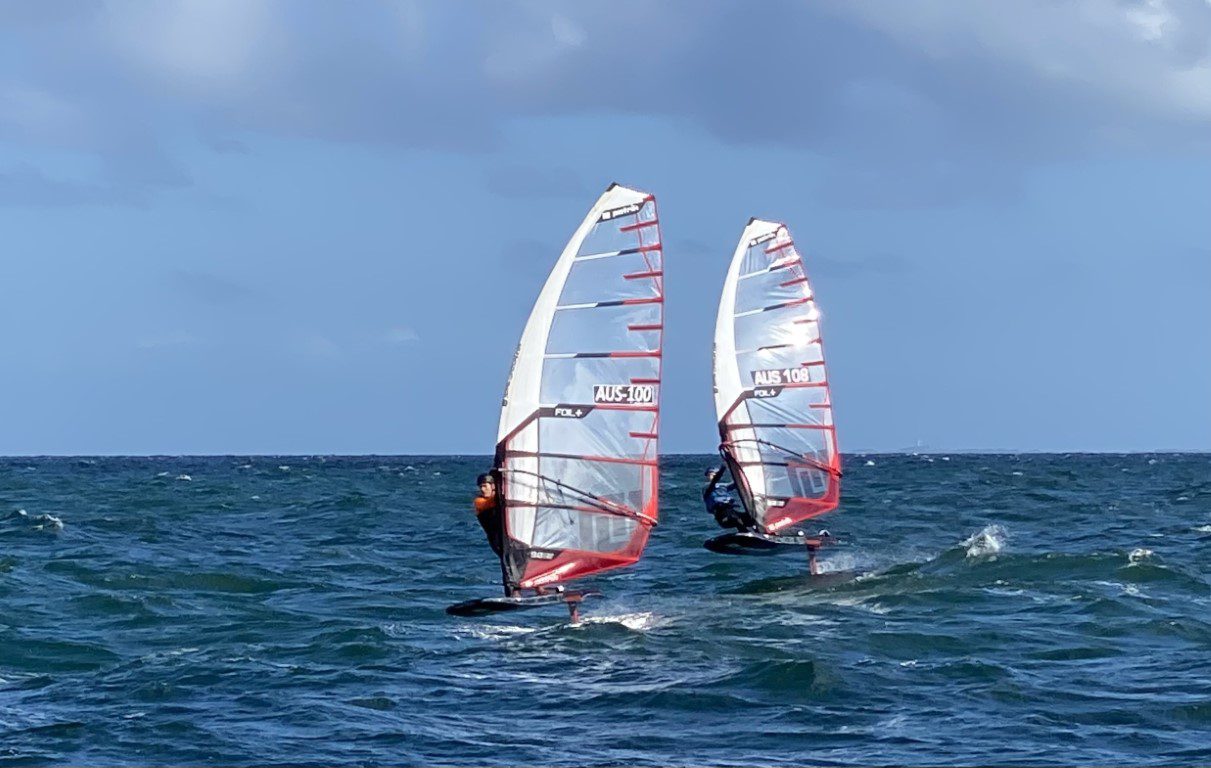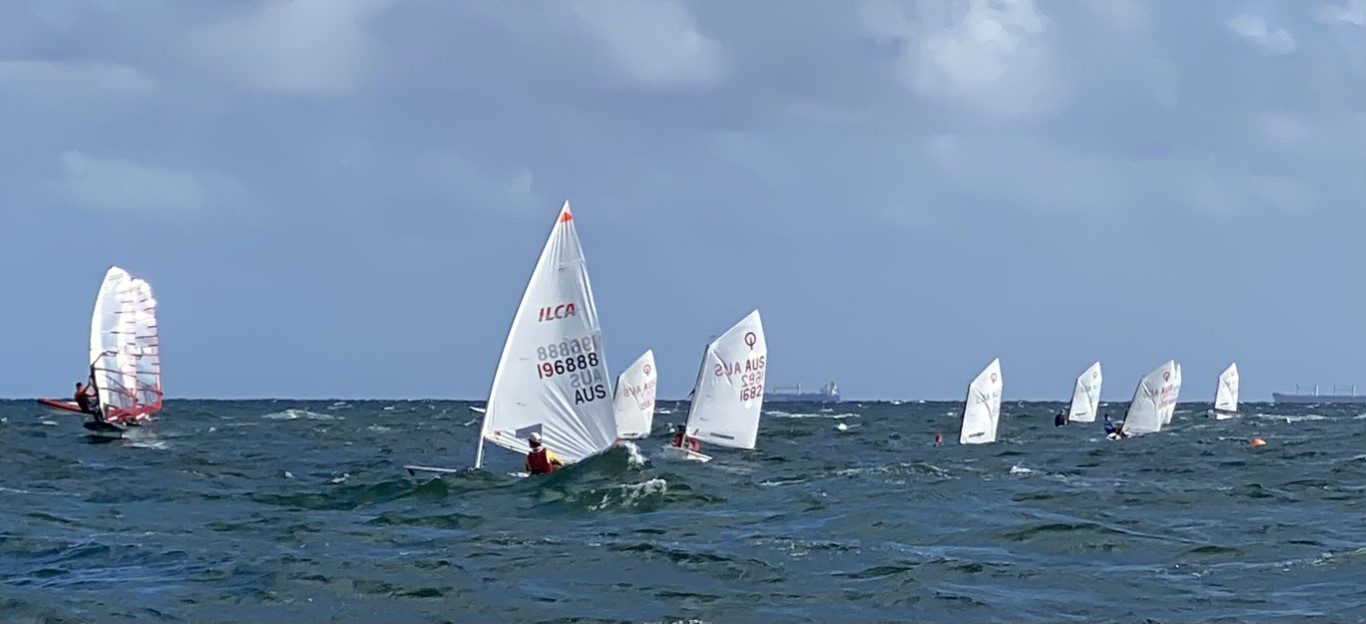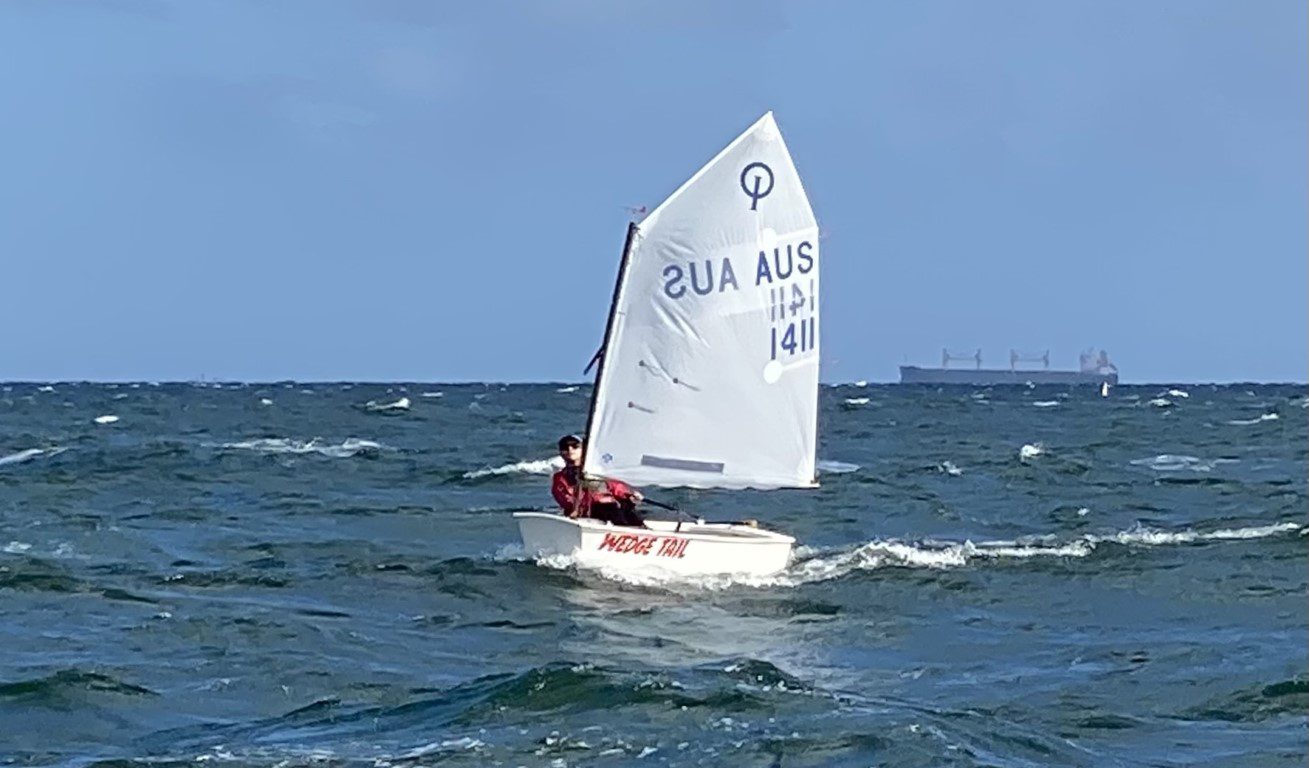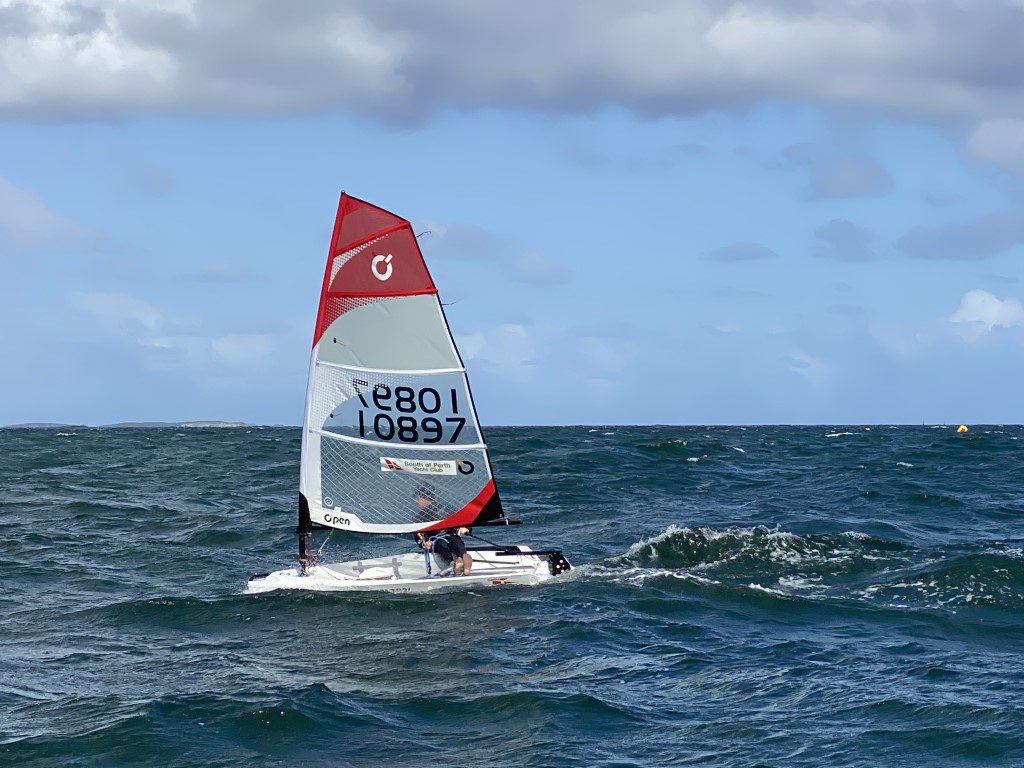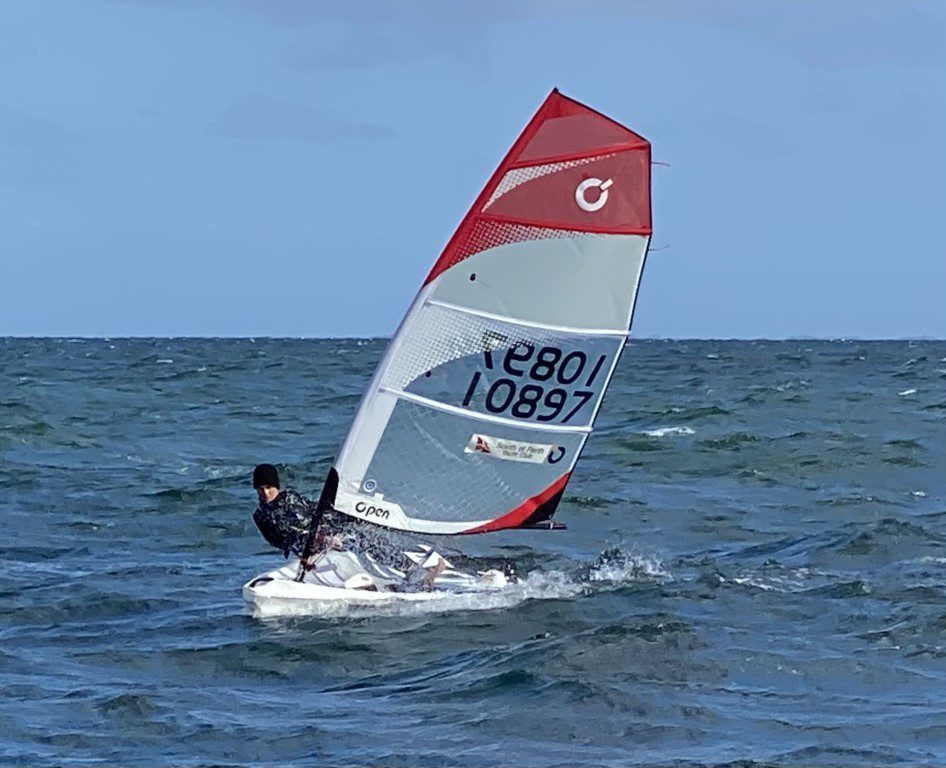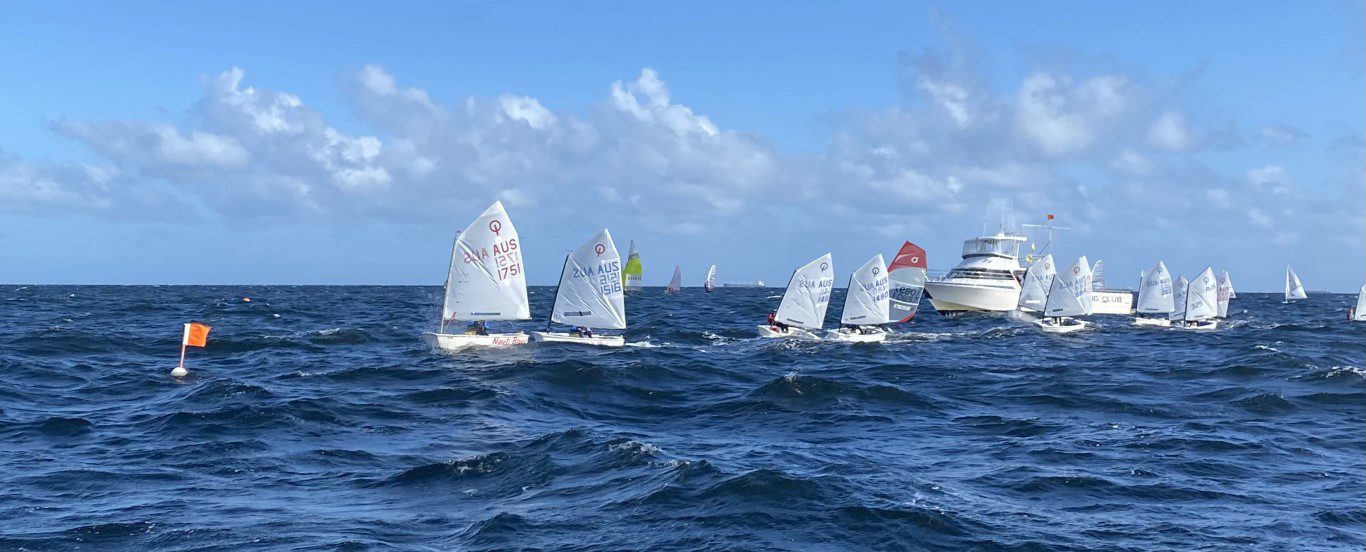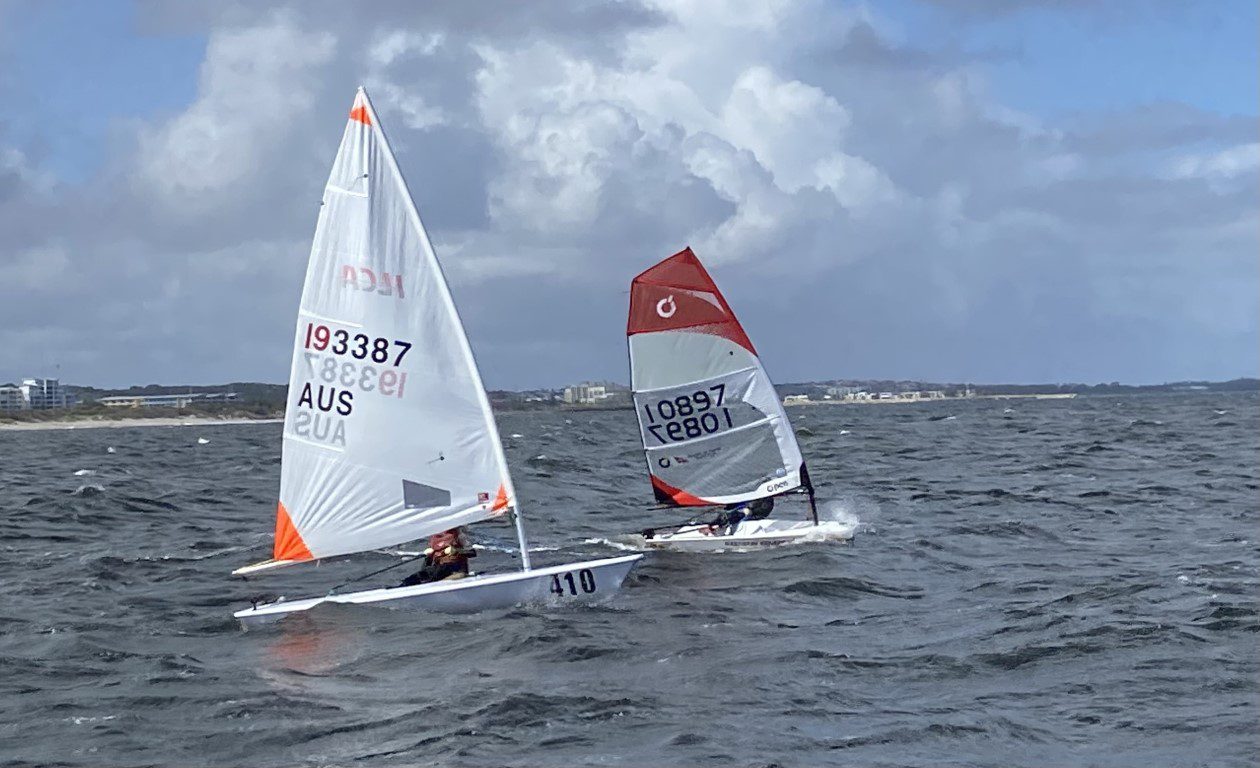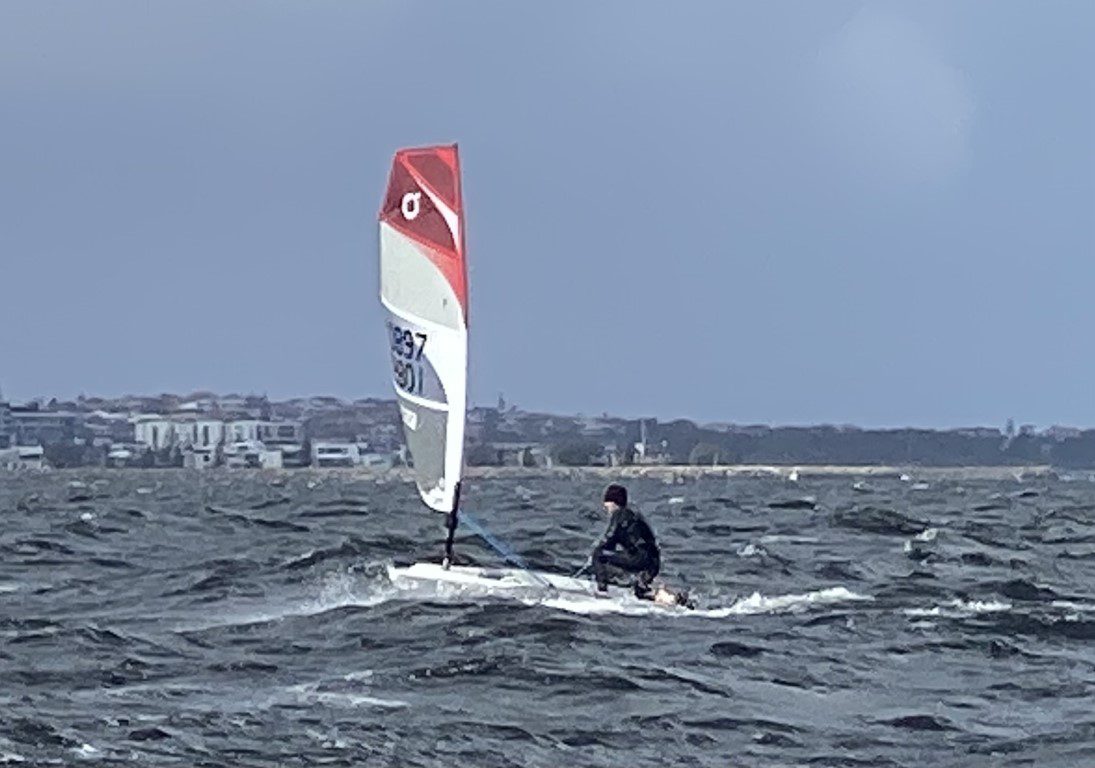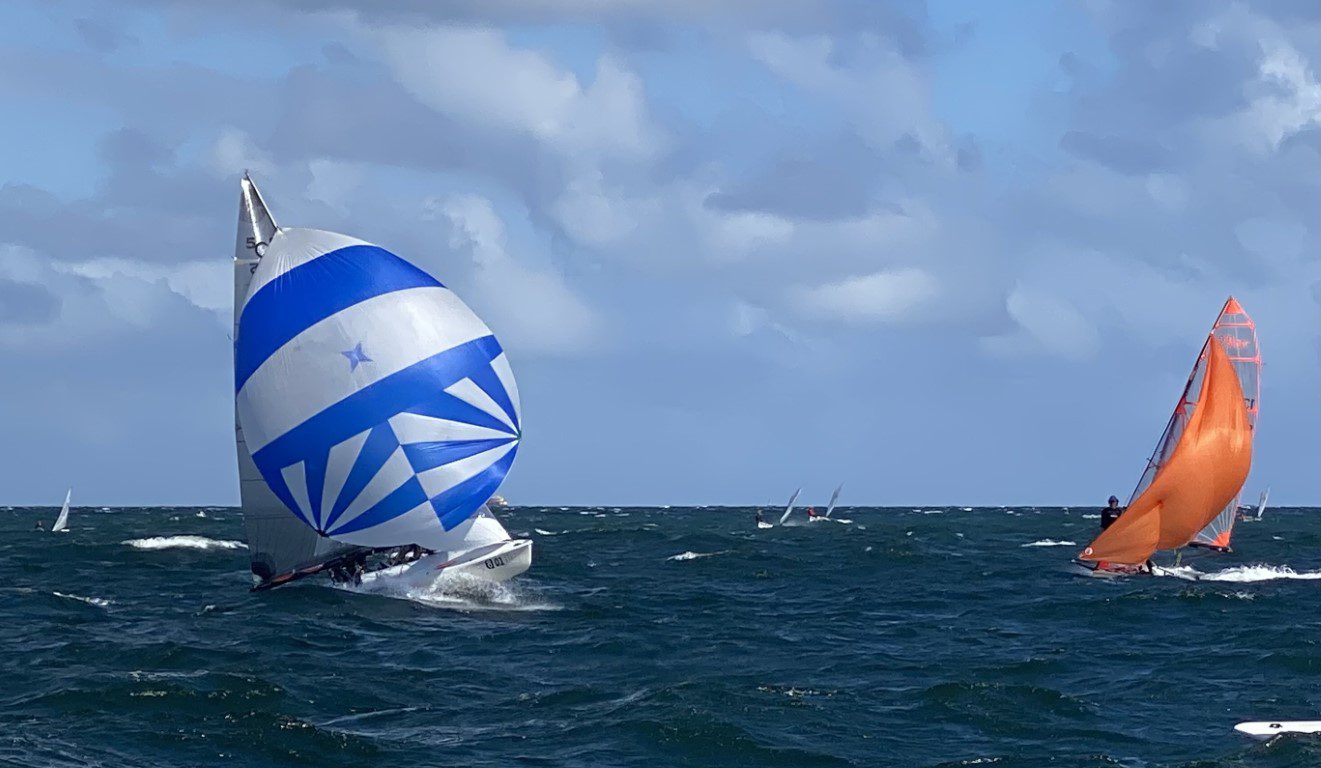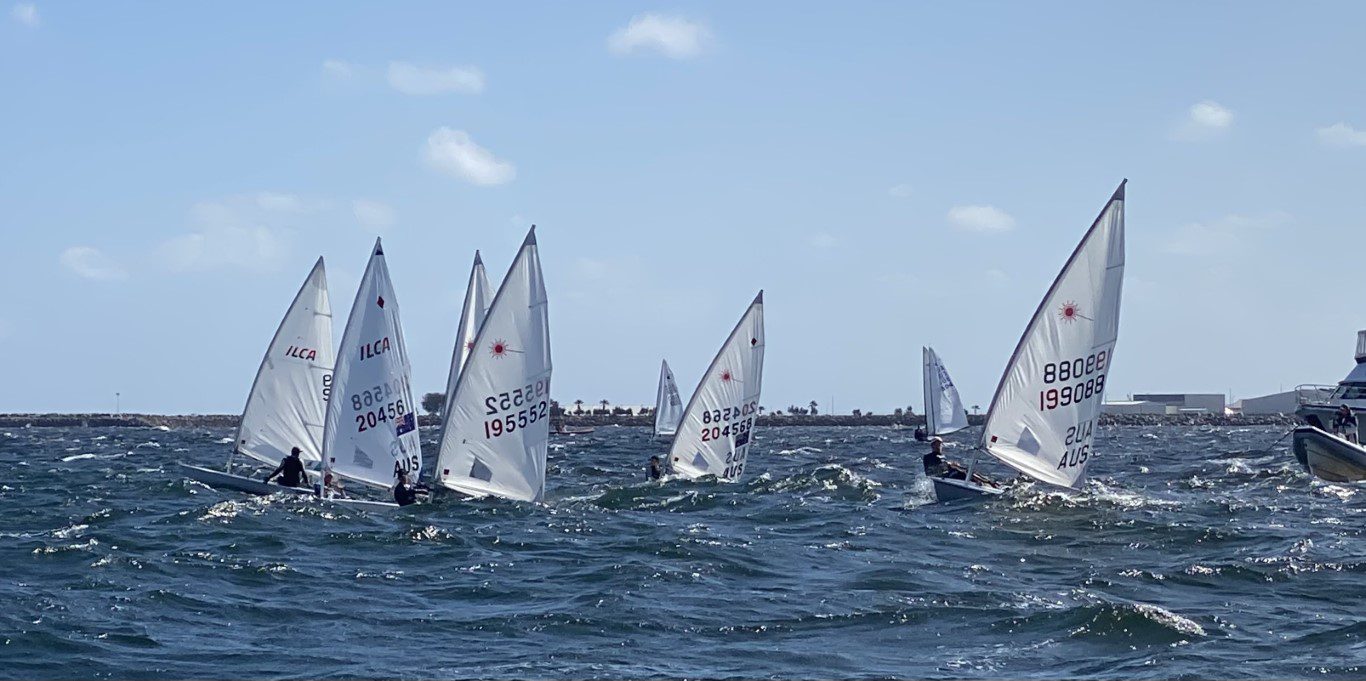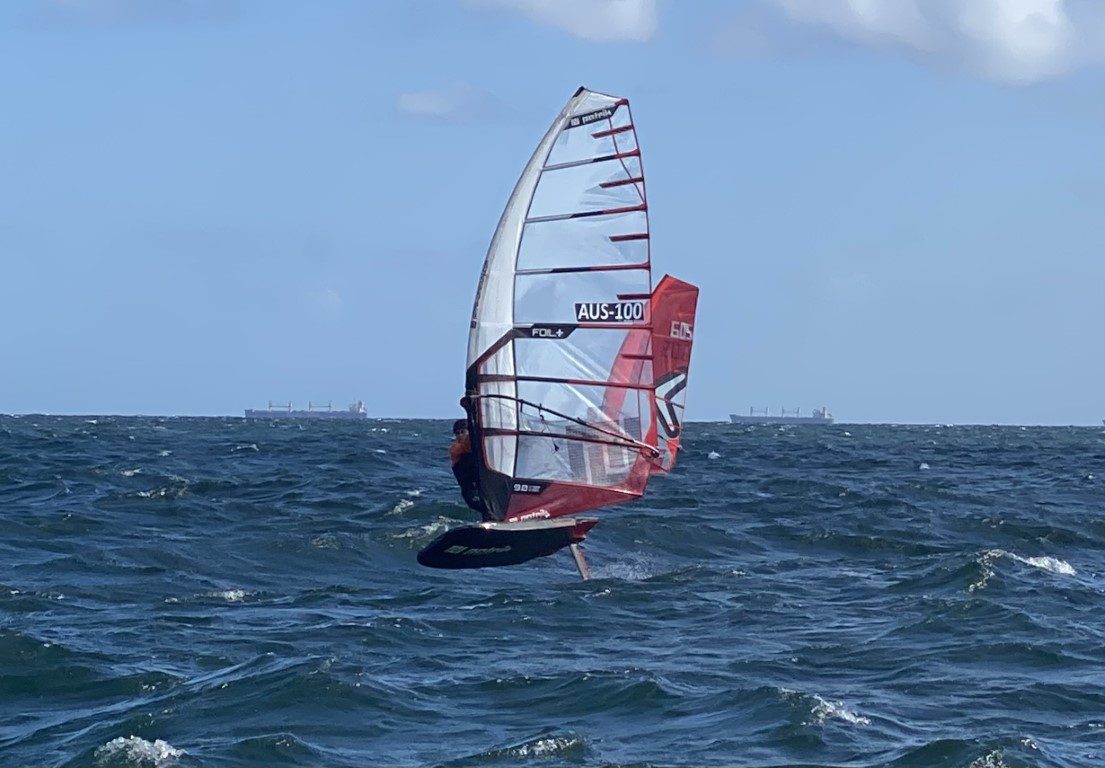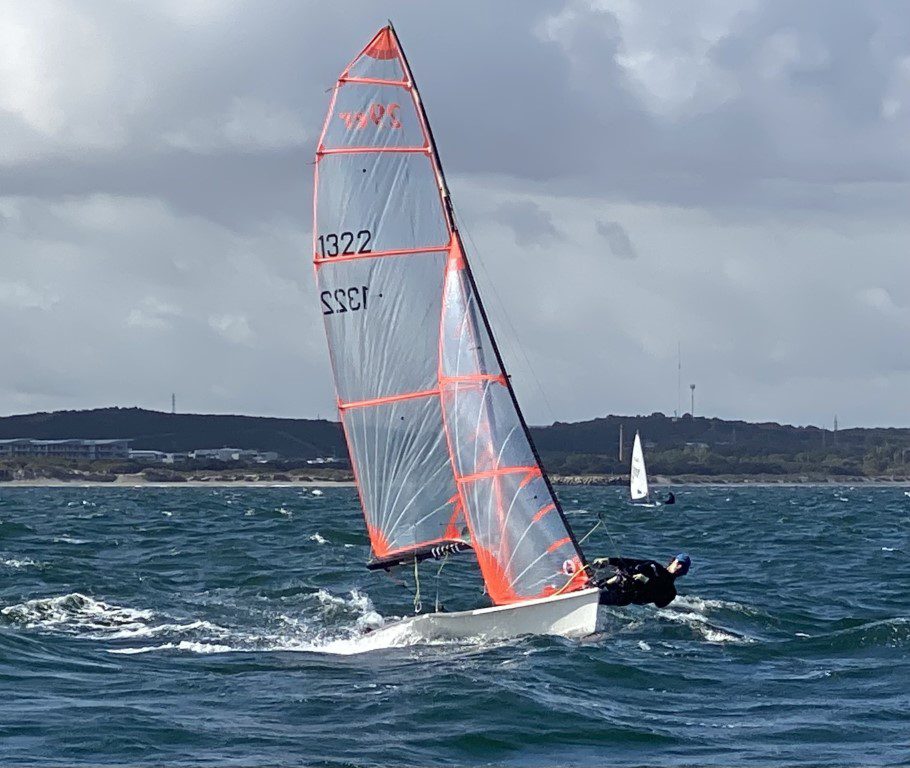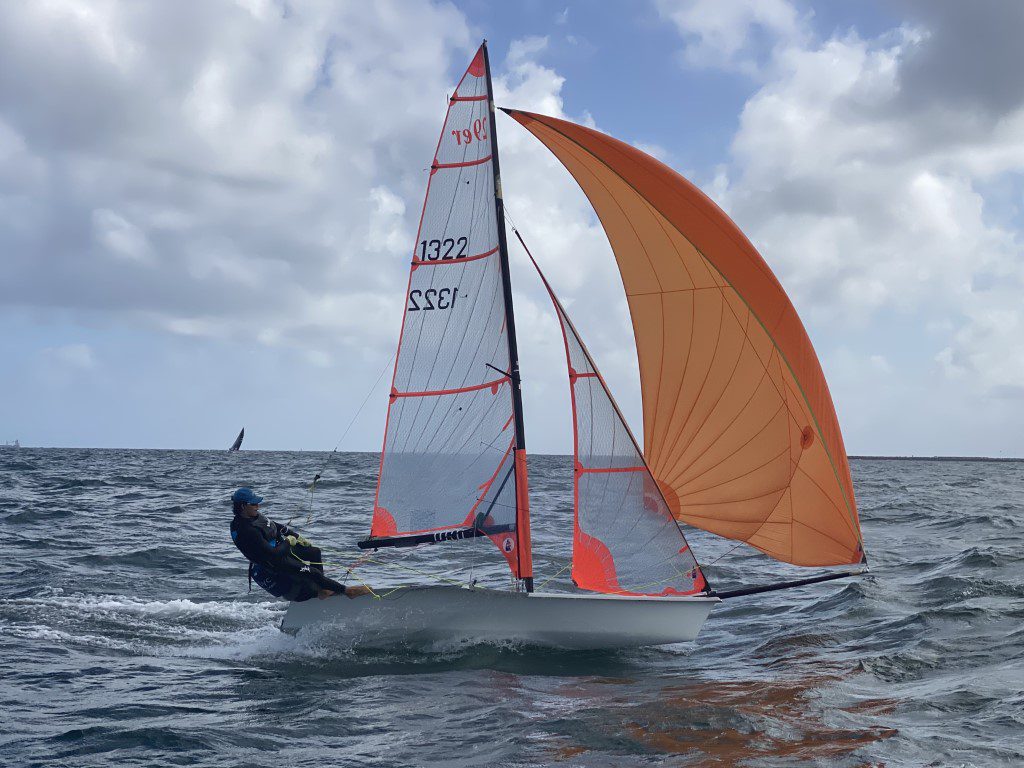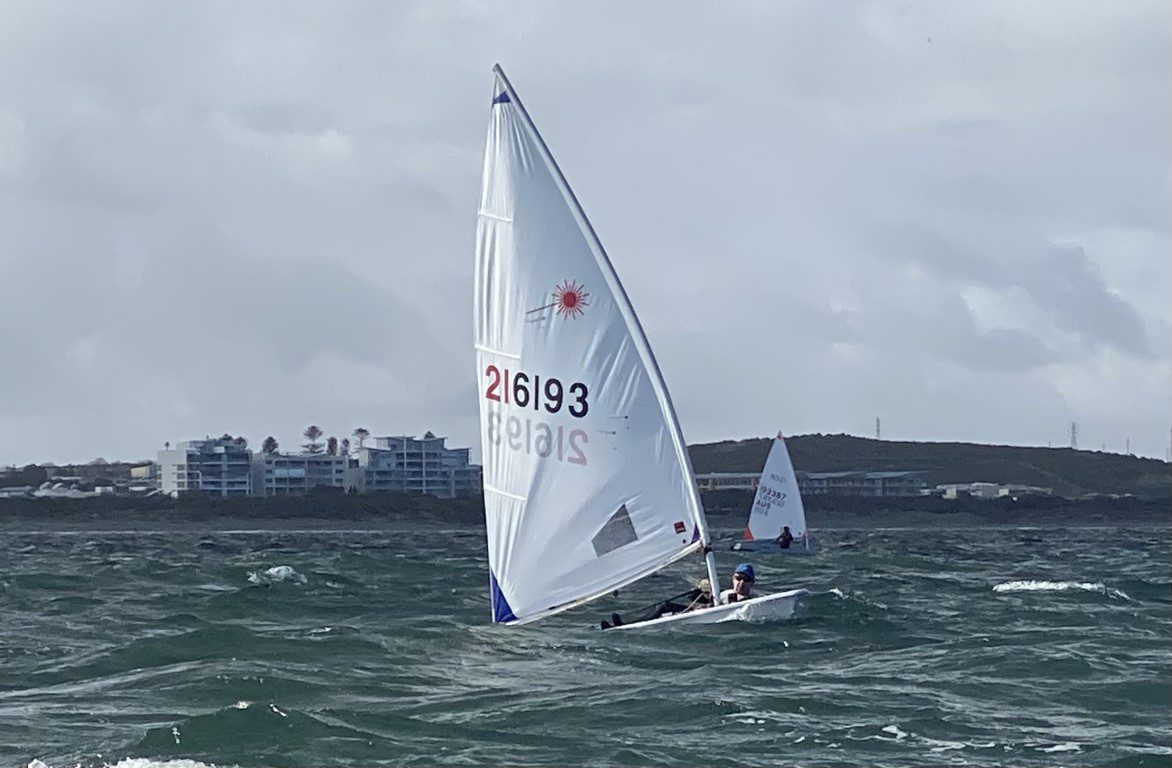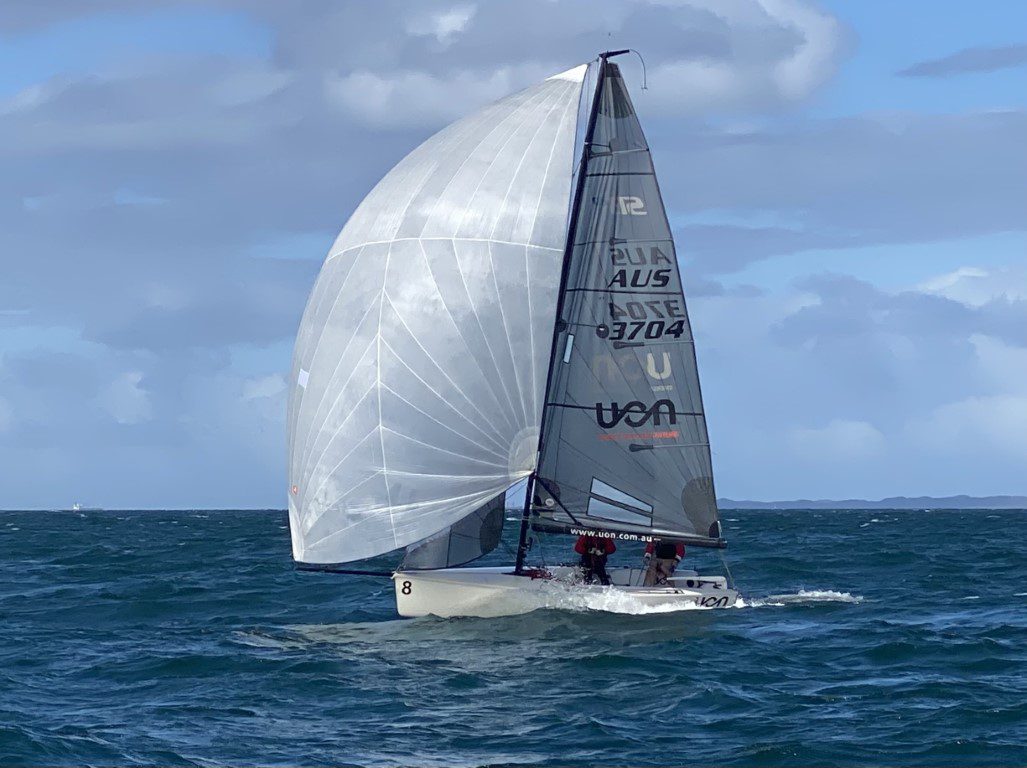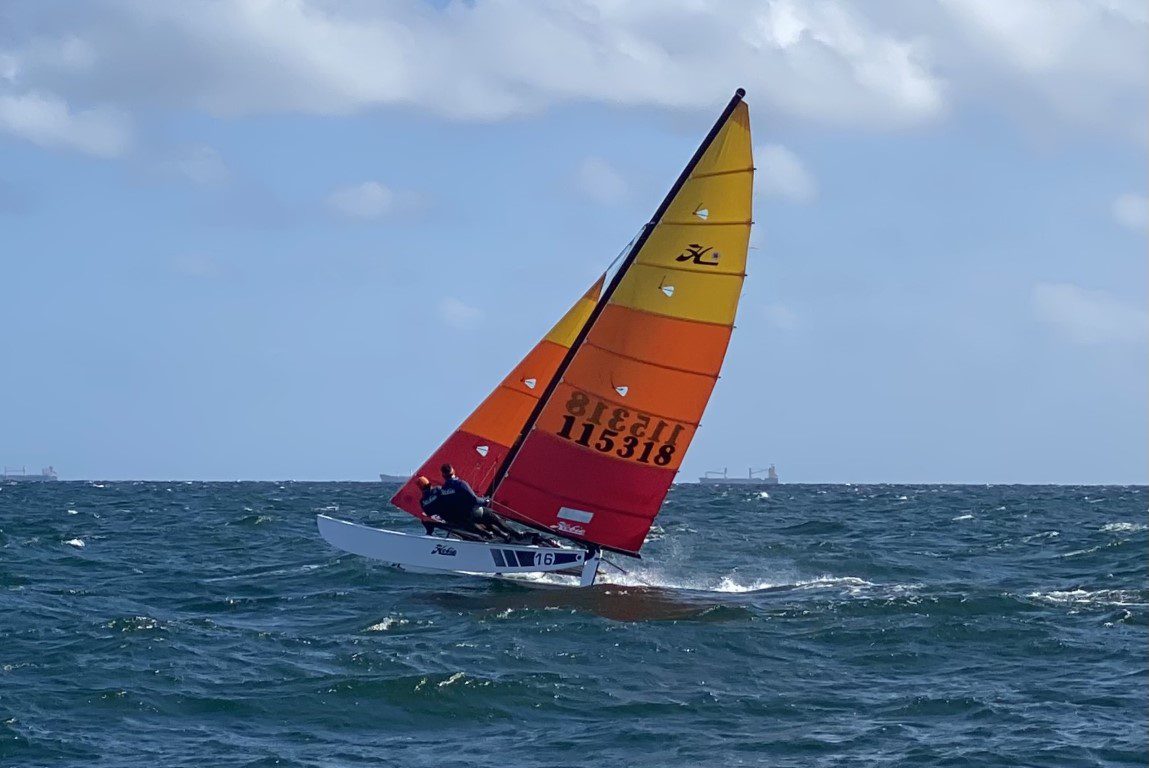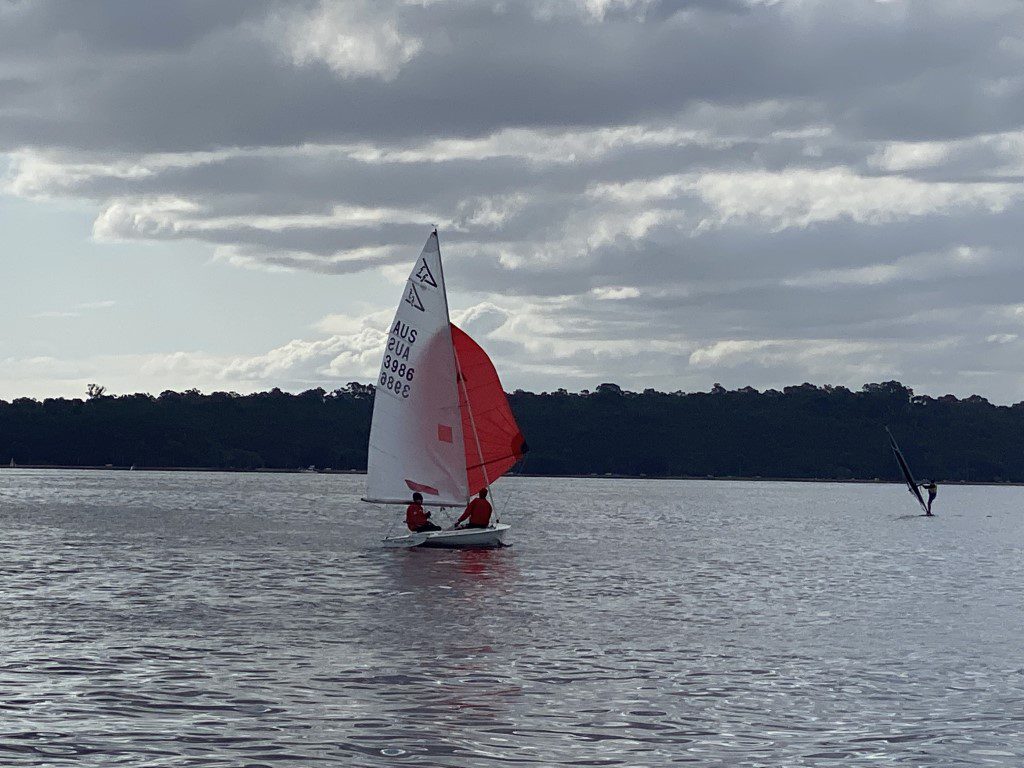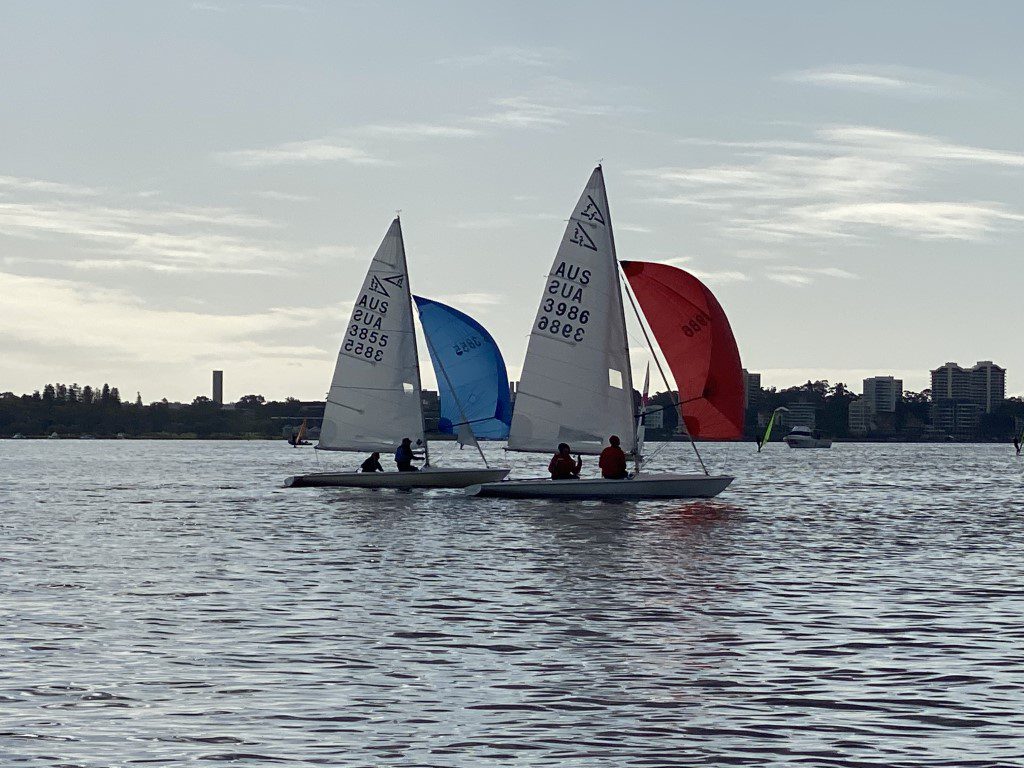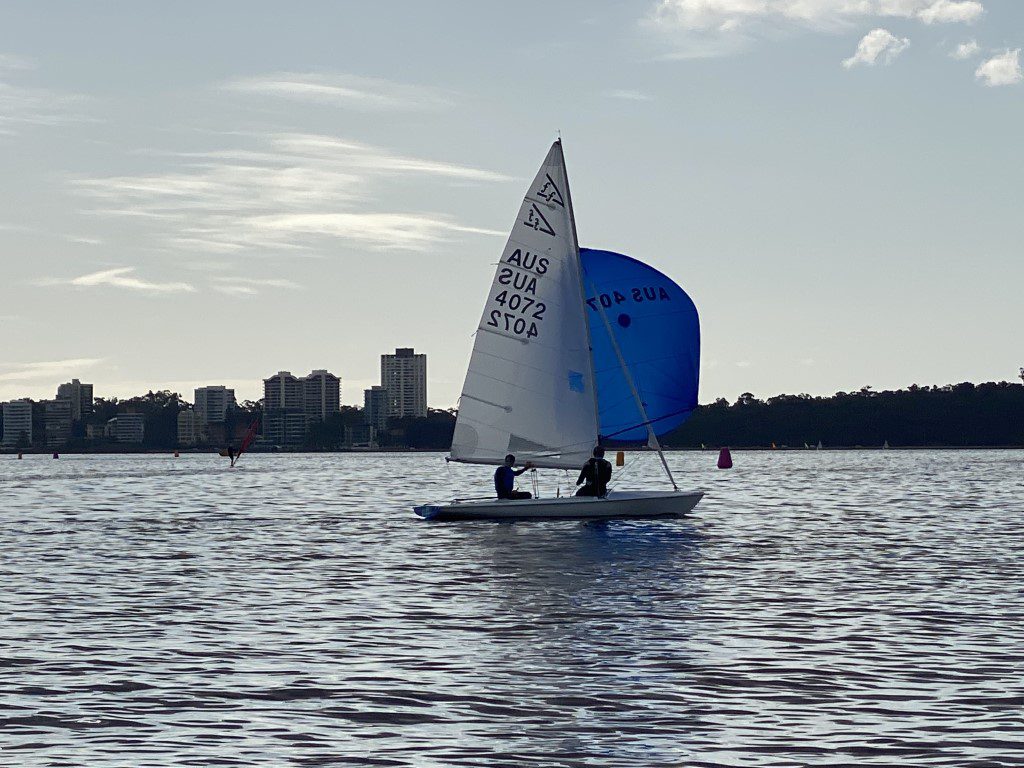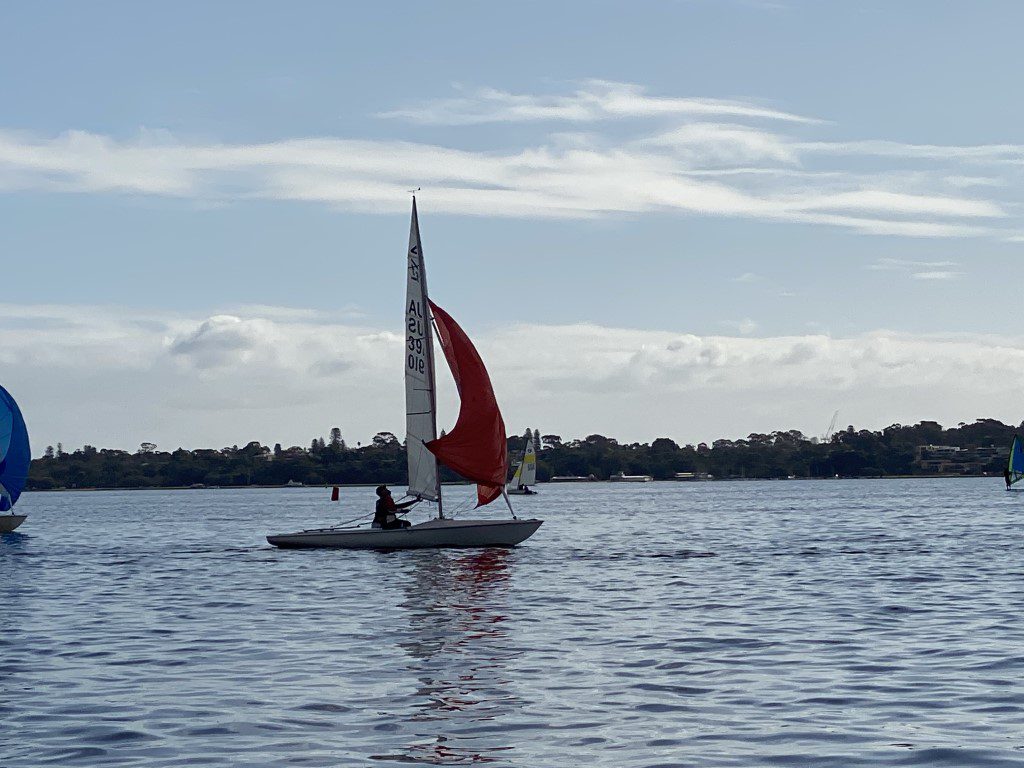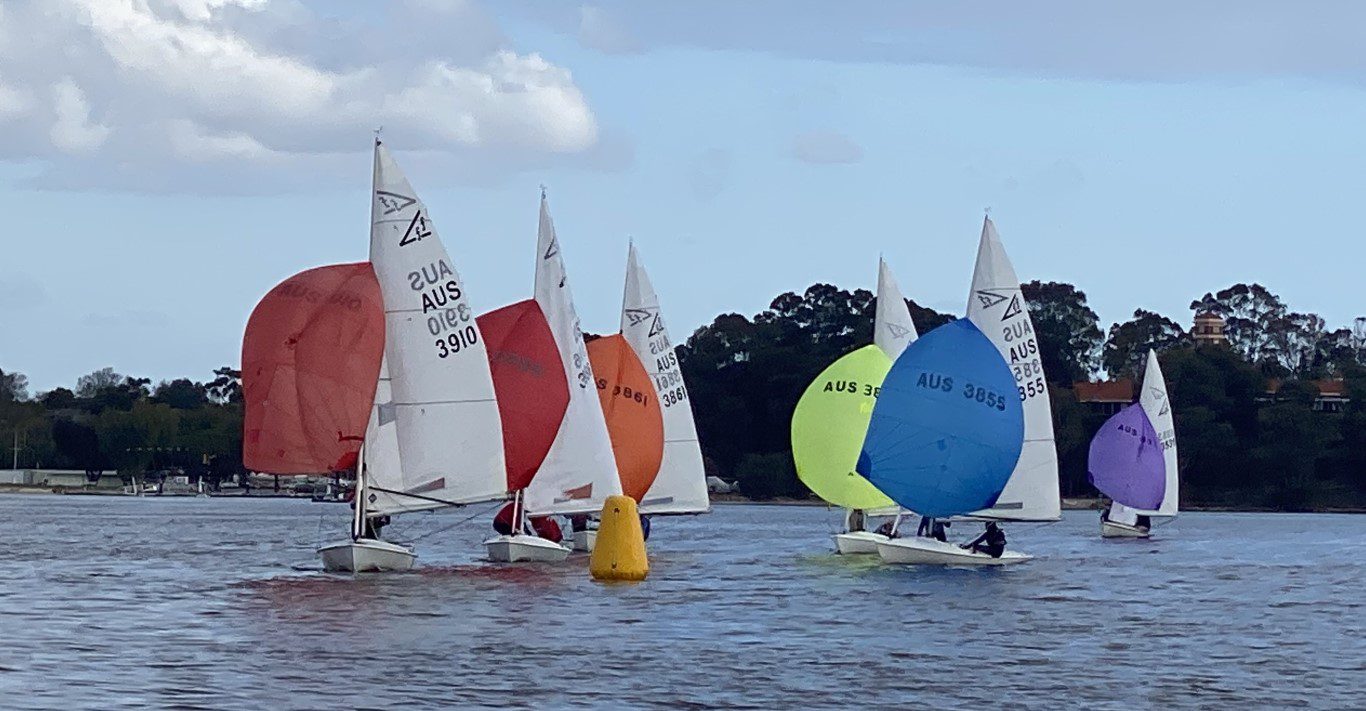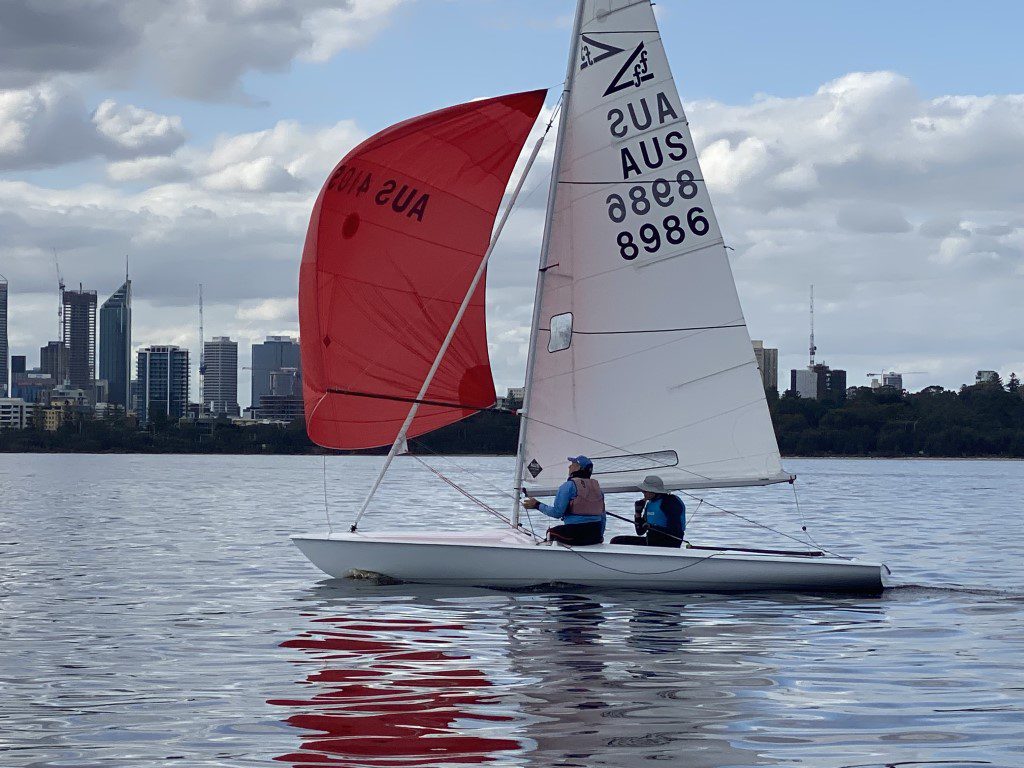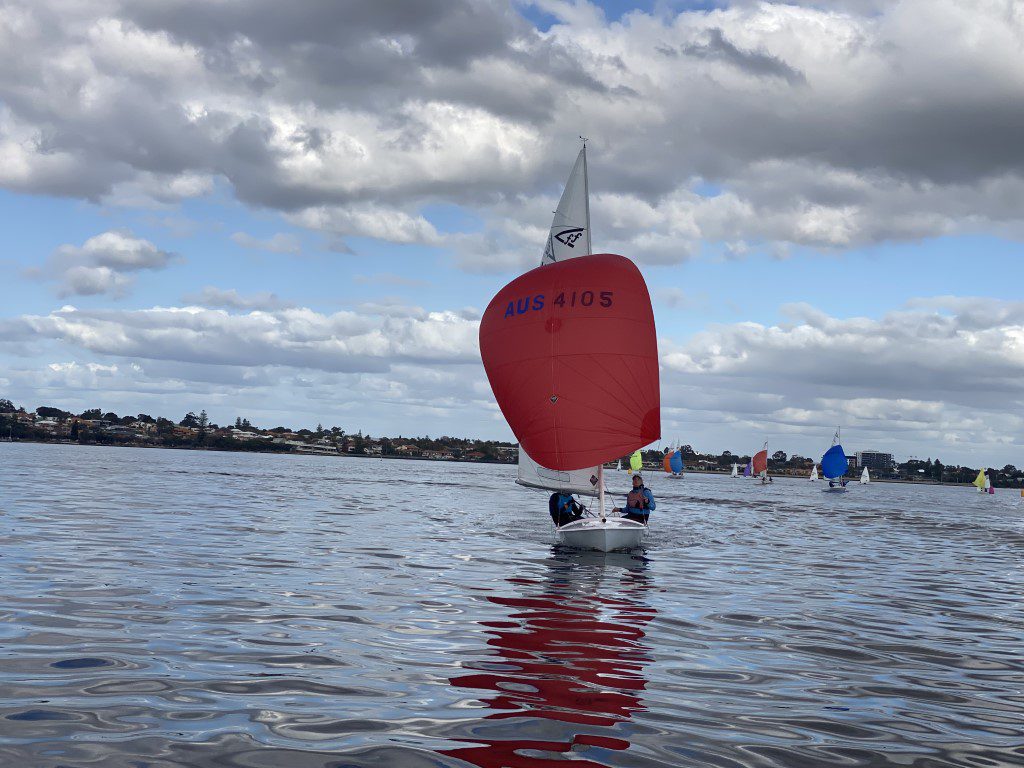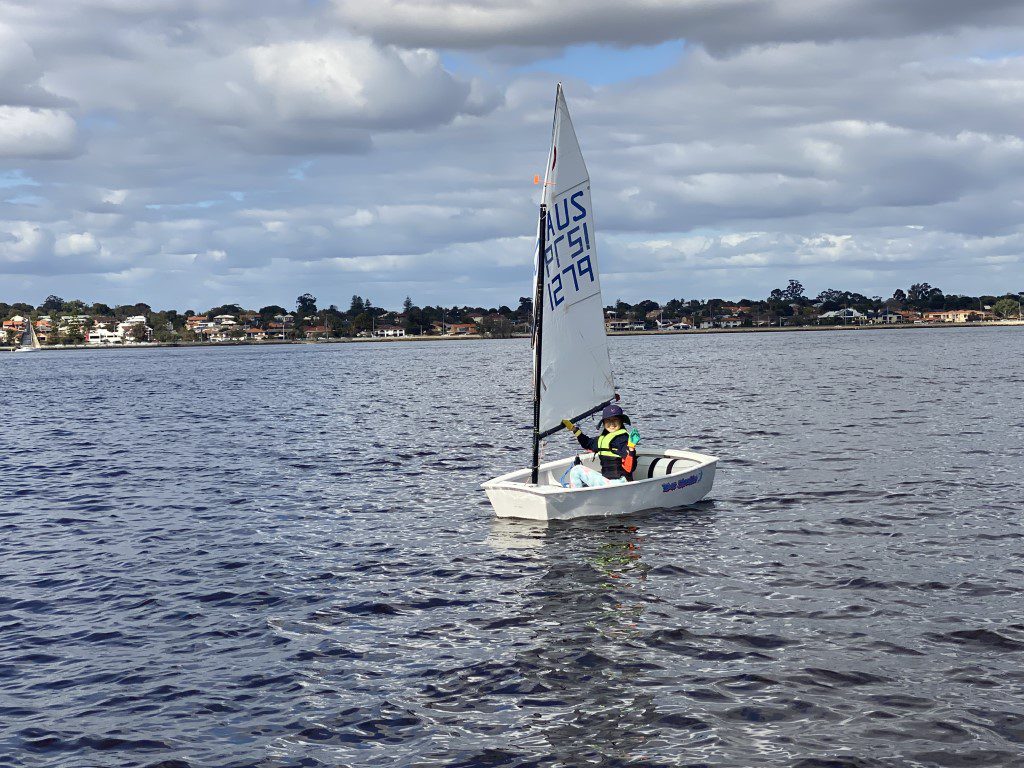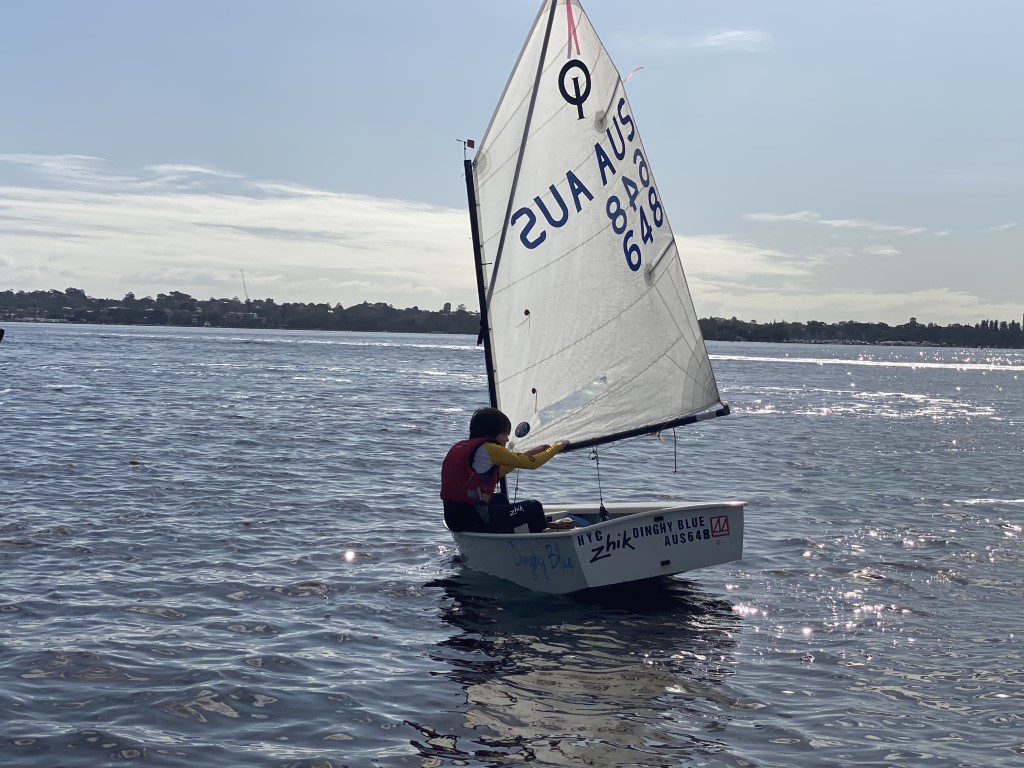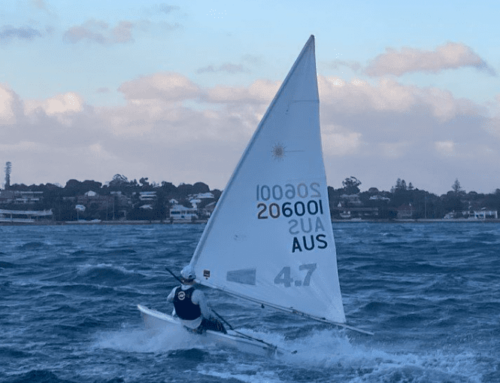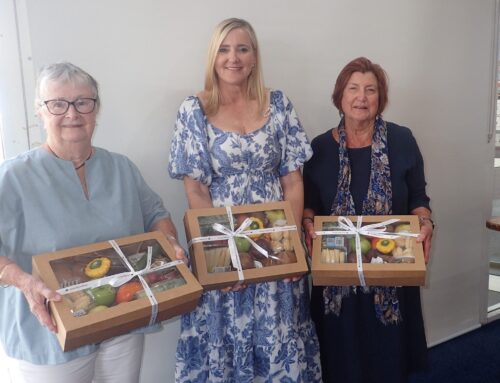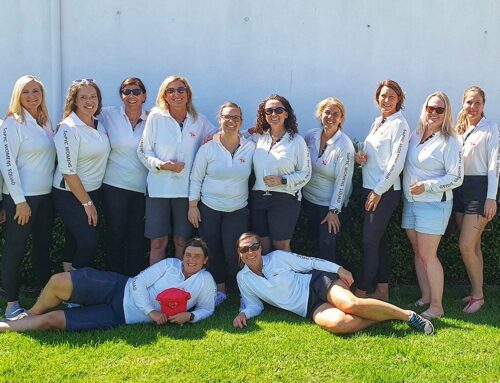FSC Huck Scott Winter Series
Three winter series were on this weekend and the first being the Huck Scott at Fremantle sailing club on a windy Saturday. Sailors launched in a rain squall that was gusting over 20 knots, which was fairly intimidating, particularly for the Optimist Intermediates, without much ocean racing under their belts. Racing was abandoned for Intermediates and sailors were sent to shore, which was a good decision, particularly with the large chop close to the rock wall.
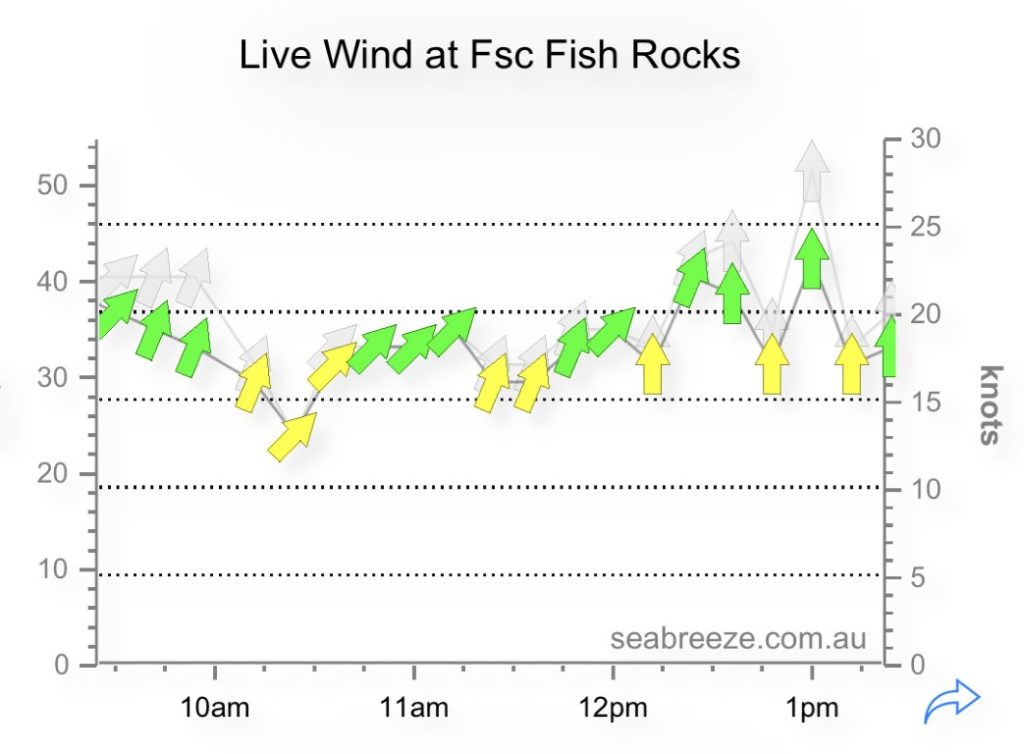
It was very challenging conditions with a lot of rebound chop from the rock wall. Towards the top of the course the wave pattern evened out and it was nice sailing.
Below are a series of shots of the various fleets tackling the conditions. Great to see Flynn controlling his Open Skiff very well by keeping on his toes going downwind. Also, awesome hiking from Dave Luketina, enjoying the tough conditions. The Optimists had some really long (40-50 minute races) and some confusion over how many laps in the first race. Another good lesson 😊
SoPYC off The Beach Winter Series lessons
Well done to Nick Jerwood and Brad Sheridan, who led both races by very large margins. Their strategy was simply to just get close to the top mark (lifted tack strategy). The conditions were very light and very shifty, so therefore too much risk to be on the sides of the course.
Downwind I found interesting to note that Nick and Brad were the only ones playing with their spinnaker pole height. You can see in the below images where lowering the pole in light winds tightens the luff and helps ease out the leach of the spinnaker. If you were looking from off the boat, even height clews is your goal.
So lesson 1 is about spinnaker pole height.
The other lesson is to take note of the other boats. Be observant – Lesson 2.
I think there were a few other boats that also flew low poles, and they either new that themselves or copied a faster boat. Well done either way…
This is what I’m getting at. Being observant of other boats. Not only is it a really fast way to learn but it also helps out with your tactics and strategy. On Professional teams a strategist is always trying to predict what other sailors are going to do so they can adapt their strategy and tactics.
For example, if you can predict a boat in front is simply going to cover your every move, then you can plan to sail them into lulls, bad shifts or even obstacles. On the river in club racing this is pretty easy to do, as everyone knows roughly where to go due to land affects and you also know each other well. In Olympic sailing, teams will profile other teams to determine their next moves. Same as in basketball, football and other sports.
Another example is in manouvers, where if you notice a boat has an issue affecting their path around a mark you can capitalise on that mistake.
Even noticing other boats with sheets in the water of if you notice their trim not correct. You can then simply sail a fast VMG mode and not worry about modifying a mode of sailing to cover them. You know because your head is in their boat as well as yours, you will be faster anyway.
Training lessons
Our training groups were down this week due to The FSC Huck Scott, RFBYC Winter series, and SoPYC Winter series (Group 2) but in any case, 15 sailors is a reasonable turnout. We really need to be collaborating better in WA….
Great to see our sailors learning some excellent slow boat skills with a rudderless figure 8 drill.
Good work Murray, Siija and Seb

